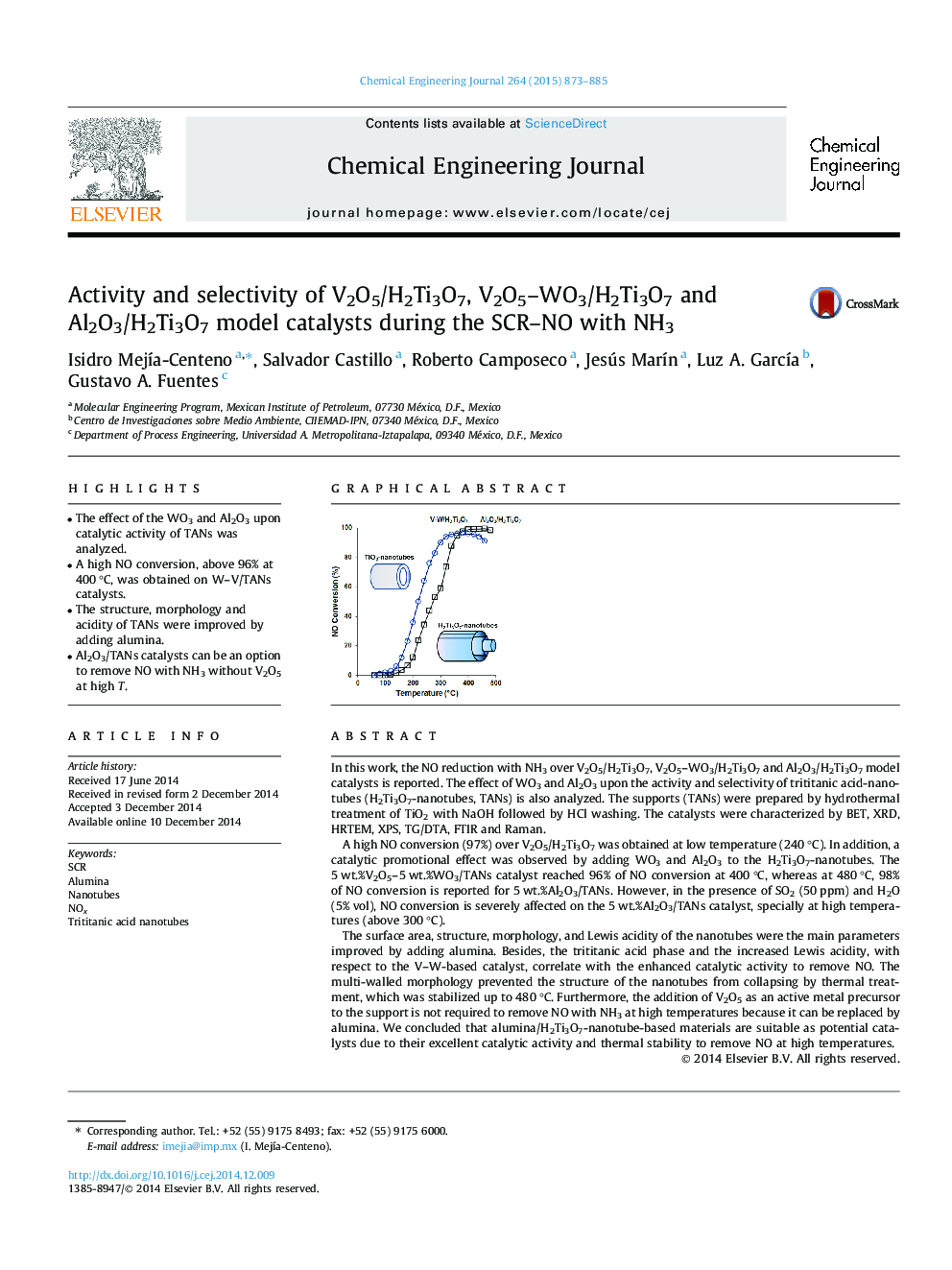| کد مقاله | کد نشریه | سال انتشار | مقاله انگلیسی | نسخه تمام متن |
|---|---|---|---|---|
| 146882 | 456379 | 2015 | 13 صفحه PDF | دانلود رایگان |

• The effect of the WO3 and Al2O3 upon catalytic activity of TANs was analyzed.
• A high NO conversion, above 96% at 400 °C, was obtained on W–V/TANs catalysts.
• The structure, morphology and acidity of TANs were improved by adding alumina.
• Al2O3/TANs catalysts can be an option to remove NO with NH3 without V2O5 at high T.
In this work, the NO reduction with NH3 over V2O5/H2Ti3O7, V2O5–WO3/H2Ti3O7 and Al2O3/H2Ti3O7 model catalysts is reported. The effect of WO3 and Al2O3 upon the activity and selectivity of trititanic acid-nanotubes (H2Ti3O7-nanotubes, TANs) is also analyzed. The supports (TANs) were prepared by hydrothermal treatment of TiO2 with NaOH followed by HCl washing. The catalysts were characterized by BET, XRD, HRTEM, XPS, TG/DTA, FTIR and Raman.A high NO conversion (97%) over V2O5/H2Ti3O7 was obtained at low temperature (240 °C). In addition, a catalytic promotional effect was observed by adding WO3 and Al2O3 to the H2Ti3O7-nanotubes. The 5 wt.%V2O5–5 wt.%WO3/TANs catalyst reached 96% of NO conversion at 400 °C, whereas at 480 °C, 98% of NO conversion is reported for 5 wt.%Al2O3/TANs. However, in the presence of SO2 (50 ppm) and H2O (5% vol), NO conversion is severely affected on the 5 wt.%Al2O3/TANs catalyst, specially at high temperatures (above 300 °C).The surface area, structure, morphology, and Lewis acidity of the nanotubes were the main parameters improved by adding alumina. Besides, the trititanic acid phase and the increased Lewis acidity, with respect to the V–W-based catalyst, correlate with the enhanced catalytic activity to remove NO. The multi-walled morphology prevented the structure of the nanotubes from collapsing by thermal treatment, which was stabilized up to 480 °C. Furthermore, the addition of V2O5 as an active metal precursor to the support is not required to remove NO with NH3 at high temperatures because it can be replaced by alumina. We concluded that alumina/H2Ti3O7-nanotube-based materials are suitable as potential catalysts due to their excellent catalytic activity and thermal stability to remove NO at high temperatures.
Figure optionsDownload as PowerPoint slide
Journal: Chemical Engineering Journal - Volume 264, 15 March 2015, Pages 873–885